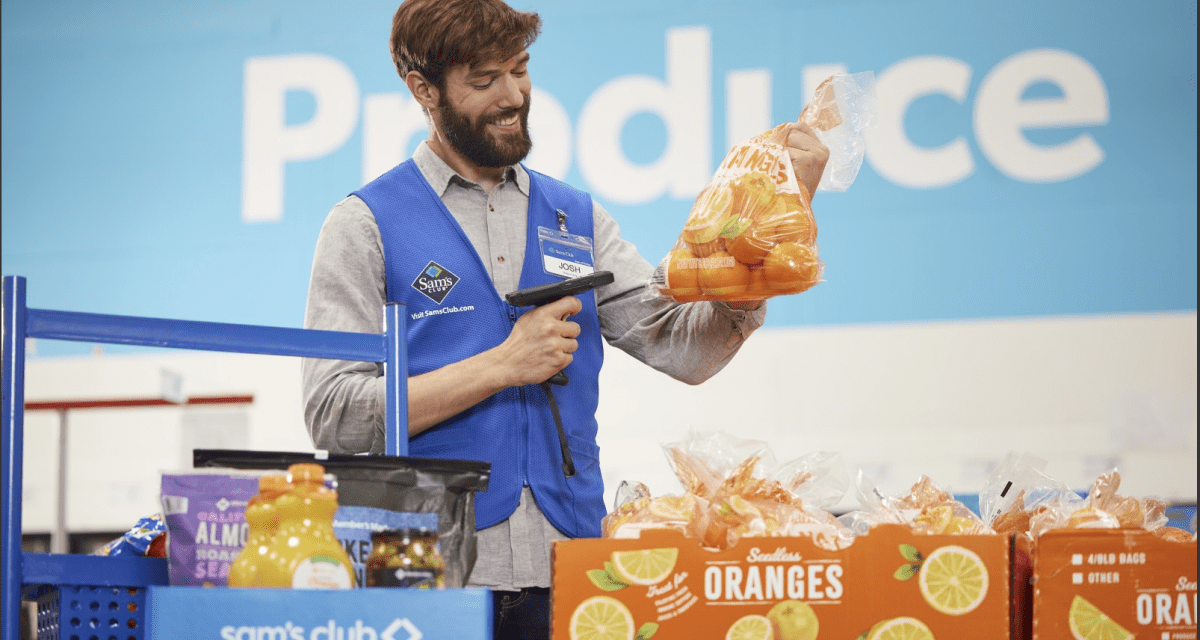Sam’s Club links its ad platform to offline sales

Sam’s Club can now offer real-time, first-party data for sales made in its physical stores to provide better quality targeted measurement and attribution to advertisers.
The Walmart-owned big box retailer said it will connect search and sponsored product ads to offline sales on its retail media network, called Sam’s Club Member Access Platform. By including its offline sales in the attribution mix, the company said, return on ad spend has increased on average by nearly 30% for its advertisers.
“We have so many members that are increasingly attributing greater significance to the search process in their [purchase] journey. It’s an area that we’ve been investing a lot into as we’ve been transforming and building this business over the past year,” Austin Leonard, head of sales at Sam’s Club Member Access Platform told Modern Retail. “Our platform specifically now can attribute those [search] clicks from our members directly to their membership ID which is then directly connected back to their purchases, whether that purchase happened in clubs, online or somewhere in between on the phone.”
This latest move follows a retail media trend among other large players. Both Walmart and Kroger have been offering capabilities to measure both in-store and online sales to their advertisers. In August 2021, Walmart revamped its retail media platform Walmart Connect to give advertisers the ability to measure both online and in-store purchases and link them to certain media strategies in order to improve ad campaign efficiency. Separately, in 2020, Kroger in partnership with PromoteIQ started connecting loyalty card data to attribute offline sales to online ads on its retail media network.
As a subscription-based retailer, the data that Sam’s Club will offer advertisers is more robust, because the company knows what every shopper buys firsthand. “I think what Sam’s Club is saying is, by virtue of their membership card, they’re seeing all the purchases offline, and now they can link online ads to those offline sales and do it quickly,” said Andrew Lipsman, principal analyst for retail and e-commerce at Intelligence Insider.
Lipsman added because Sam’s Club has built this feature “real time” it would give brands a complete data set making it relatively high quality data compared to rivals. But Lipsman also pointed out that, traditionally speaking, there have always been issues with integrating offline sales data, because it’s not designed for this type of real time ad measurement and that’s why it has never taken off in a big way.
But the offline sales data compiled by Sam’s Club may be more comprehensive than competitors because it runs its own membership program, in comparison to rivals that share offline reporting metrics based on loyalty card purchases or panel data estimates.
“If it comes from loyalty cards, there’s a lot of data in loyalty cards, but it’s not everyone. That’s part of the reason why Kroger is actually such a valuable data set because they have 97% of purchases going through their loyalty card. So there’s very high data integrity. Whereas like, Walmart, by contrast, has a lot of cash transactions,” Lipsman added.
This week, Modern Retail reported that physical store retail media represents the next big business potential for retailers to capitalize on as in-store audiences are substantially larger than digital audiences on average. Even so, the last few years have fueled massive investments to support online retail media networks.
And this has meant a growing line of business for top retailers. Walmart’s global advertising business, for example, grew 30% to $2.7 billion in 2022, the company shared during its fourth-quarter earnings call.
But the big move is to attribute both online and offline sales to these growing ad platforms. Closed loop attribution is “the single most important reason” for the growth of online retail media, said Lipsman. He added it has been the primary driver in the growth of online ad revenue for tech giants like Google, Facebook and Amazon. Amazon generates roughly $30 billion a year through its advertising business.
“To date, the closed loop measurement has been primarily online ads driving online sales. And that’s a very tight closed loop, a quick feedback loop and it allows advertisers to make decisions on that information very quickly. So it’s very easy to optimize and increase that as a result,” Lipsman added.
Last month, Sam’s Club launched retargeted display advertising on its retail media platform in partnership with The Trade Desk and LiveRamp to increase ad effectiveness and personalization.
Going beyond the measurement, Leonard said that he thinks the important part for Sam’s Club is that this is going to help suppliers big or small and give them a full view of what their ads are delivering across sponsored product ads or display ads. “In our case, sponsored products ads are such a big part of that member journey, that this will help them tell the full story back to their organizations of how they’re growing their sales at Sam’s Club and then how to optimize for that member experience,” he said.

